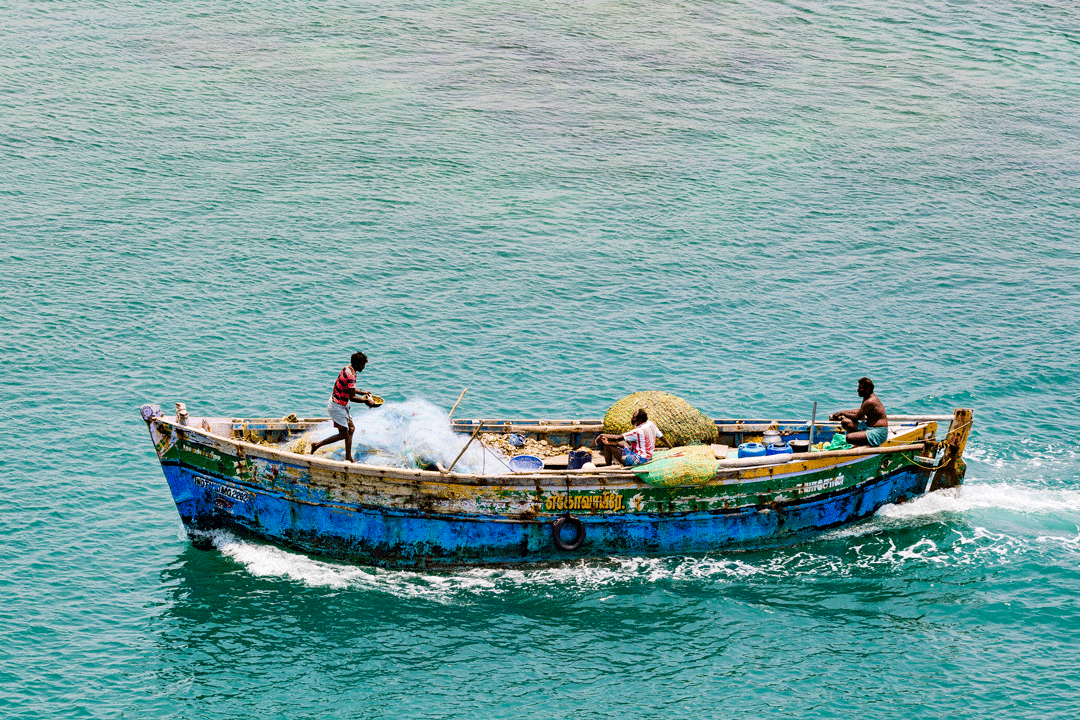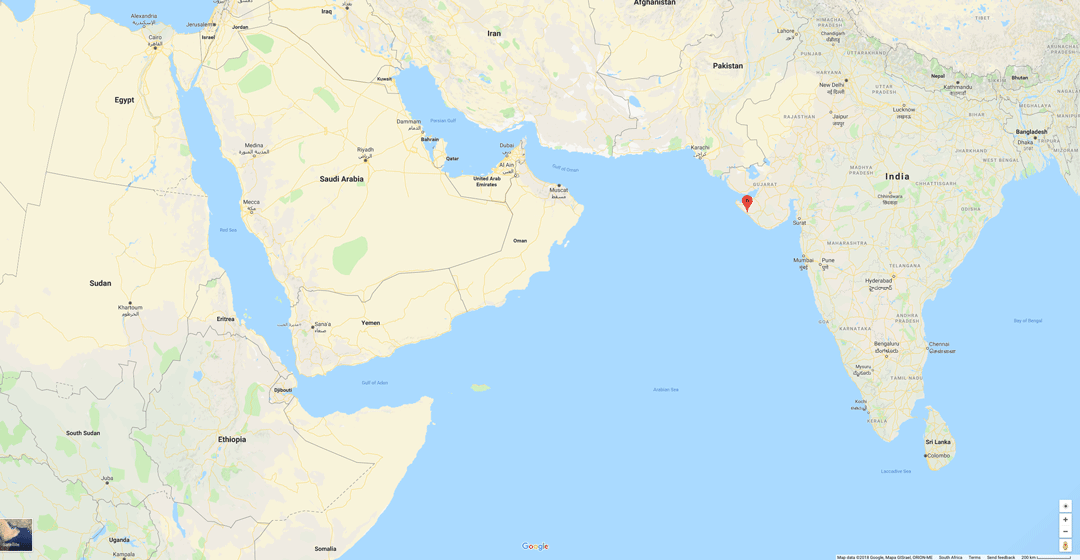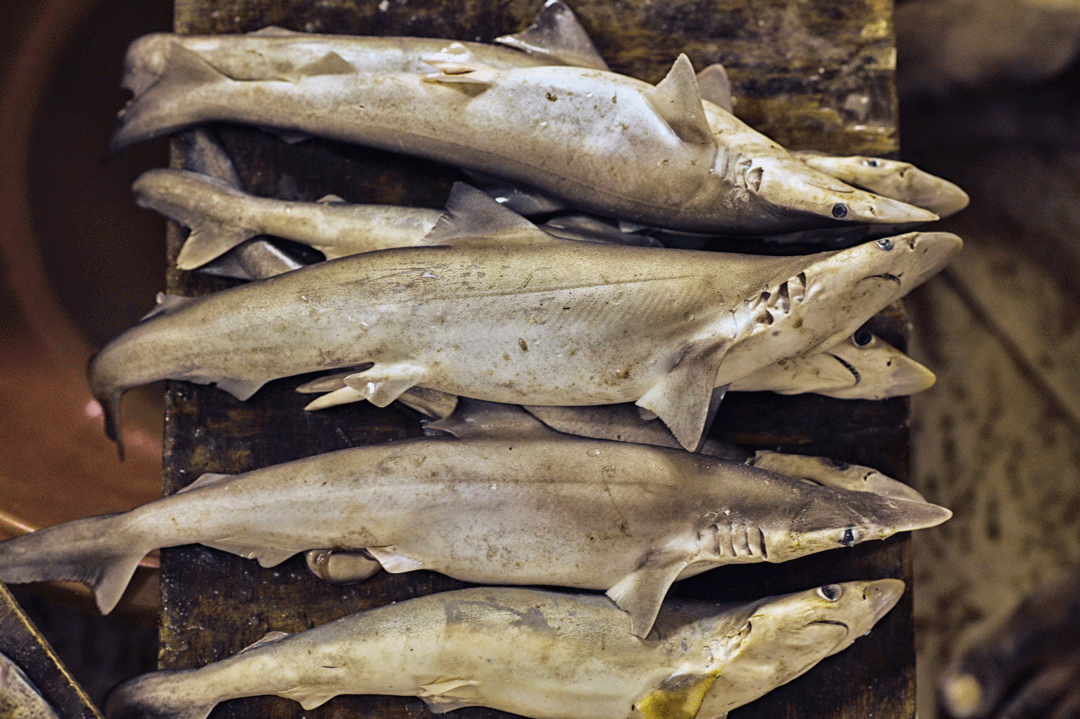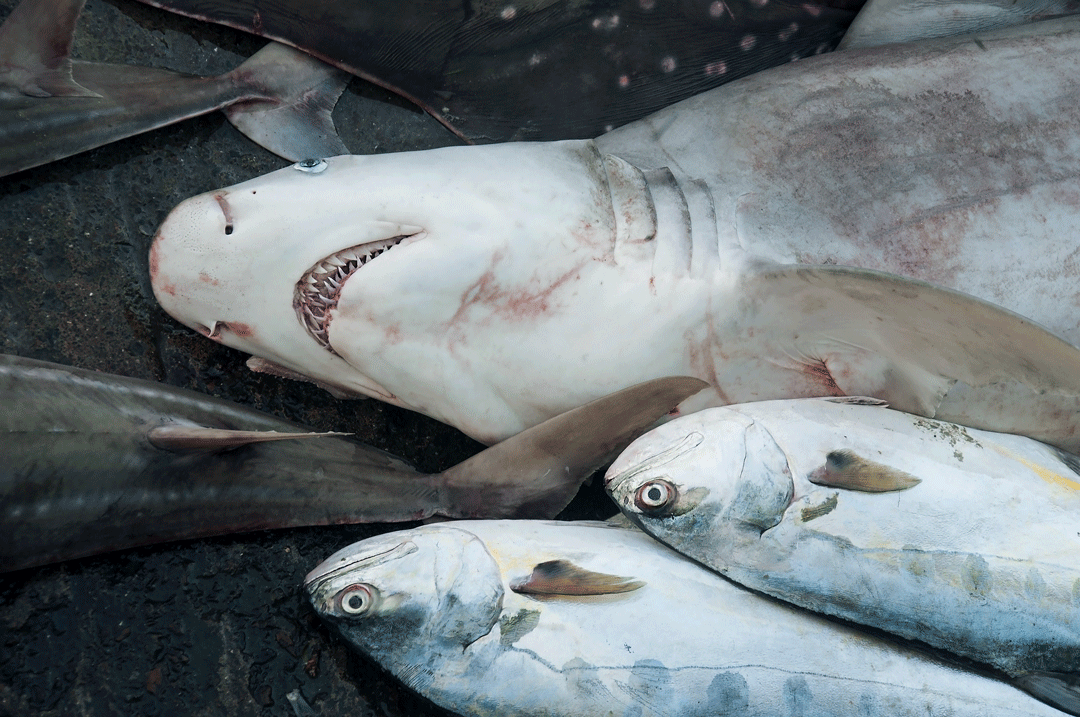Investigating sharks in India
Alissa Barnes is passionate about sharks in her home country of India – and the fact that we know relatively little about many of their threatened populations drives her research. She published the results of her MSc work together with her co-authors Dipani Sutaria, Alastair Harry and Rima Jabado in the journal Aquatic Conservation: Marine and Freshwater Ecosystems in July this year. We caught up with Alissa to find out what motivates her, and get some deeper insights into the results of her scientific study.

Photo © Catherine L-Prod | Shutterstock
What drew you to this study for your MSc thesis?
My interest in marine biology had started when I was a little girl in Mumbai. Ultimately, this curiosity put me in touch with Dipani Sutaria, who was looking for students to assist her in her SOSF research on shark diversity in north-west India. Under her guidance, I learnt the scary truth that fisheries in India are at their highest harvesting capacity, without the slightest understanding of the available fish stocks left in the oceans. Though some work was in progress on commercially important marine fauna, there was very little known about the plight of sharks. The scattered records of sharks in India failed to paint a complete picture of the risk that this magnificent predator faced. Moreover, there were few systematic studies conducted in Indian waters to give an ecological baseline for future comparisons. This was enough to get me going! We decided that I would be able to collect data for my MSc thesis within this project, and it worked out wonderfully. We assessed the biological features of sharks landed in relation to the type of fishing practices used. This helped us gather baseline data, which will ultimately help devise an inclusive management strategy.
The species your study focuses on: the milk shark (Rhizoprionodon acutus), the grey sharpnose shark (Rhizoprionodon oligolinx), the spadenose shark (Scoliodon laticaudus) and the bigeye smoothhound shark (Iago omanensis), are the dominant species in shark catches landed in Porbandar, India. Are there currently any fisheries policies (like size limits, TACs) in place to manage their populations?
There are currently no fisheries policies specifically to manage shark populations. In 2015, recognizing certain gaps in information for the conservation and management of shark fisheries in the country, the Central Marine Fisheries Institute (CMFRI), as well as the Bay of Bengal Large Marine Ecosystem Project (BoBLME), worked to formulate a National Plan of Action for Sharks (NPOA-Sharks). Having highlighted these information gaps, and recommended what changes were needed in fisheries, we now need to act towards implementing these changes. This also means we have to fill the remaining knowledge gaps; the biggest one being, of course, lack of baseline data for most elasmobranchs along our coasts.

Porbandar, India, the location where the study was carried out. Image © Google Maps | Google 2018
Why is Porbandar of particular interest?
There are several important reasons why we looked at fisheries in Porbandar. It is the 9th largest fishing harbour contributing to shark fisheries. Both mechanised (trawls) and motorized (gillnets, with and without hooklines) fisheries are represented at this site, allowing for a holistic approach to the study. Porbandar is also the largest port and the central site where sharks from other fishing harbours are transported and then auctioned to other parts of the country.
You found that females outnumbered males, except in the milk shark, in these catches. Are there potential consequences to a skewed sex ratio in catches?
Based on the available literature, skewed sex ratios do have ecological consequences and can cause imbalances in population dynamics in marine ecosystems (Moller and Legrende 2001). Most of these studies involve active sampling of fish. Here, we have only landing site data. In our study, the reason for milk sharks showing no parity is probably because our sample size was small (they showed up mostly in gill and hookline fishery in the summer and monsoons). Skewed sex ratios could mean that these fishing grounds might be important breeding and nursery grounds for these species, in which case it would be important to keep them free of fishing during certain times of the year.

Photo © Ruslan Guzov | Shutterstock
You mention that most of these sharks are fast-growing and productive, which might explain why they’ve persisted in spite of heavy fishing. However, their biology, population trends and stock status seems variable from region to region.
This statement refers predominantly to the spadenose shark (Scoliodon laticaudus). This species has dominated shark landings since the 1960’s across the west coast of India. Sharks are known to show variability in their life history traits in different oceans across the globe. In India itself, we see small variations in traits. Comparing this kind of adaptability and survival across fishery types in their geographic range could inform us about the kinds of fisheries that are more sustainable than others (relatively speaking).
You mention that most, if not all, life stages are susceptible to fishing. How do you think fisheries management could use your information to redress this?
Depending on the kind of fisheries carried out in different habitat types and depths, different sized sharks are captured. For example, trawls and purse seines catch everything from spadenose sharks to tiger sharks (other than in summer/monsoon fishing ban, which is when species show up that aren’t around during peak fishing season). Gillnetters fish in offshore waters but usually have large mesh size and therefore catch the adults and sub-adults of most sharks, and generally not smaller-sized sharks. This is very interesting to study, because joining the dots is what helps in designing strategies that matter.

Photo © Promus | Shutterstock
Where there any findings that surprised you?
Intensive shark landing surveys had not been published before in a way that is accessible, so a lot of the data we were getting during our surveys was surprising to us. A few things that struck me the most were; firstly, that shark landings were dominated by species and individuals of less than 1 m. Secondly, I was really surprised at the sheer number of deep sea sharks (like Iago omanensis) harvested as bycatch that weren’t of consumption value but were sold at very low rates for fish meal and fertilizers. Dipani et al. also recorded the sandbar shark for the first time in our region.
What do you hope will come of this survey and its findings?
At this point, I don’t see it directly aiding in management strategies. This is because there is still much biological research to be done, and the politics across fishing communities still requires address. Since sharks are largely caught as bycatch, and most of their life stages are vulnerable to fishing processes, the management of shark fisheries is complex. Management processes will have to be looked at holistically. That said, we do hope that this simple, but crucial, biological information forms a strong foundation to build on with additional biological information, and with data on seasonality and breeding grounds, especially of commercially important species. Information like this will aid in building a strong management strategy. Our hope also lies in fishermen themselves. The idea is that one day, trawl and purse seines fisheries processes, and net mesh sizes, are controlled in nursery grounds and shark aggregation zones. These changes are the only hope for fisheries themselves to be sustainable, and fishing as an occupation to keep thriving.
Reference: Barnes, A., Sutaria, D., Harry, A. V., & Jabado, R. W. (2018). Demographics and length and weight relationships of commercially important sharks along the north-western coast of India. Aquatic Conservation: Marine and Freshwater Ecosystems, 40, 347–10.
You can read the paper here.
